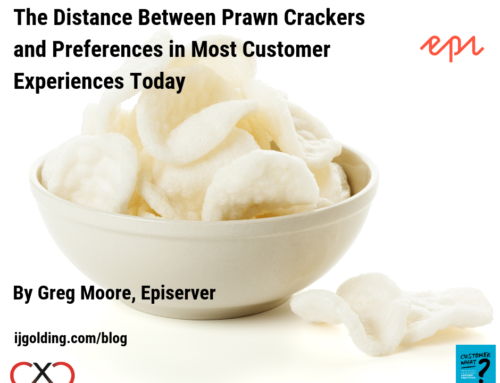I attended a meeting recently where a senior director of a large organisation (who shall remain nameless) confidently made the following statement:
‘we are going to KILL email as a customer communication channel’
Strong words aimed at a group of executives from the world of customer service. Not a particularly customer centric statement either. However, this senior leader was only confirming (as many others have before him) that customer initiated emails are no longer productive or cost-effective for his organisation. As a result, his organisation (not him personally) had decided to ultimately STOP customers from being able to send emails into the customer service team.
As I have already said, many experts have been forecasting, or even confirming, the death of email for some time now – here are a couple of online articles on the subject:
- Are we facing the death of email? – the Independent – December 2011 – http://www.independent.co.uk/life-style/gadgets-and-tech/features/are-we-facing-the-death-of-email-6273170.html
- The death of email – PCPro – May 2012 – http://www.pcpro.co.uk/features/374737/the-death-of-email
What these articles suggest is that people’s behaviours are changing. As younger generations become more comfortable with new and innovative technologies, their usage of ‘outdated’ forms of communication such as email are declining. Email is also recognised as unproductive and slow – especially when compared to newer social media driven communication methods. One organisation, Atos, has already banned the use of email internally. The following statement is an excerpt from an article written by Bobby Travis for an online website called 40tech (http://www.40tech.com/2011/12/01/the-death-of-email-at-least-internally-at-a-large-multi-national-company/ ):
‘Atos announced the no-email policy in February of 2011, but have now officially implemented it. CEO Thierry Breton, who was also the French finance minister from 2005-2007, said that employee emails are only 10 percent useful, and are 18 percent spam — which seems about right to me, considering the emails I’ve received in companies I’ve worked for. All to often, the emails would be useless time-wasters — especially the ones that involved questions from co-workers that didn’t actually read the email in the first place.’
No-one can doubt that using email can often be a frustrating experience. Here is my simple summary as to why:
- Sending them – can you always be certain the recipient has received it?
- Receiving them – it often takes hours, and more commonly days for the person you sent it to to respond
- SPAM – all too often we receive unwanted emails from too many sources to mention
- Lack of communication! – how many times have you received an email from a colleague sitting less than ten feet away from you!
So if this is the case, why do we still send them? Hands up if you are reading this and have sent an email today? How many of you have sent an email in the last hour? How many of you have sent an email in the last ten minutes? It is certainly true that the majority of us send very few hand written letters today, but despite the predictions of the decline in email, how many of you put your hands up?
The reason I am blogging on this subject is not to point the finger at an organisation like Atos and question its internal communication policies. I am not concerned with what an organisation does within its own four walls (unless it is detrimental to the customer that is). The reason I am writing this is that even though there may be examples that suggest email is dying as a way of communicating internally, it is still the CHOICE of communication for many customers externally.
A great article by Patricio Robles in eConsultancy early in 2011 sums up the situation extremely well (http://econsultancy.com/uk/blog/7139-when-will-the-death-of-email-die ):
‘…even if we assume that email has generally seen a decline in usage, it doesn’t mean that email is dying. That’s because for email to ‘die’, it has to decline to the point at which it has no meaning or value. That’s not the case. What has really happened:
• New communications channels have given individuals the ability to communicate more efficiently. Thanks to SMS, Facebook, Twitter, et. al., internet users don’t have to send an email when another channel is better-suited to deliver a particular kind of message. In other words, email doesn’t have a monopoly on digital communications. Needless to say, that’s a good thing.
• New communications channels have created more opportunities for communication. Messages that may not have been sent previously are now being sent because the right kinds of tools exist. Take status updates, for instance. Chances are the vast majority of status updates sent via Facebook and Twitter never would have been sent via email.
Both of these are actually good for email. Instead of treating digital communications like a nail for which the hammer is the only tool worth using, email is now just one tool that can be used where appropriate. That means a lot less noise, and a lot more focus.’
What Patricio’s article rightly says is that email still has its purpose. Many millions of consumers still prefer to communicate with organisations using email. In the title of this blog I ask ‘are organisations right to decide to kill email as a customer communication channel?’ Patricio would suggest not – and I completely agree.
My concern with any organisation making a strategic decision to limit customer CHOICE – whether it be related to product or service – is almost always making that decision for its own benefit, rather than for the benefit of its customer. If a customer chooses to send an email to your customer service team, surely it is only right for you to allow them to do so – even if it is not the most efficient way for the customer to communicate with you. Rather than ‘KILLING’ a communication channel altogether, would it not be better to GUIDE your customers as to the method of communication that may be best for them, rather than your organisation? In a world of cost challenges, maybe I am being naïve, but if we are to be truly customer centric, you cannot say that I do not have a valid point.
I remember attending a conference a couple of years ago where an attendee had a ‘rant’ about an experience he had had in an airport the previous day. This chap had arrived at the airport to check in. When he approached the check in desk, the agent politely told him she could not help him. When he enquired as to why, she told him that he HAD to check in using the self-service machines. When he asked if she could do it, she refused – company policy. Sounds rather silly doesn’t it?

In the past, some companies ‘hid’ the contact telephone number on their websites to ‘prevent’ customers from calling them. Most of these organisations have since reversed that decision. Surely ‘KILLING’ email is the same thing. Rather than making things harder for customers and limiting choice, surely we should be educating customers to find the easiest solution – that would make far more sense as a strategy.
Are organisations right to want to eliminate email as a customer communication channel? In my opinion, no they are not.








Leave A Comment